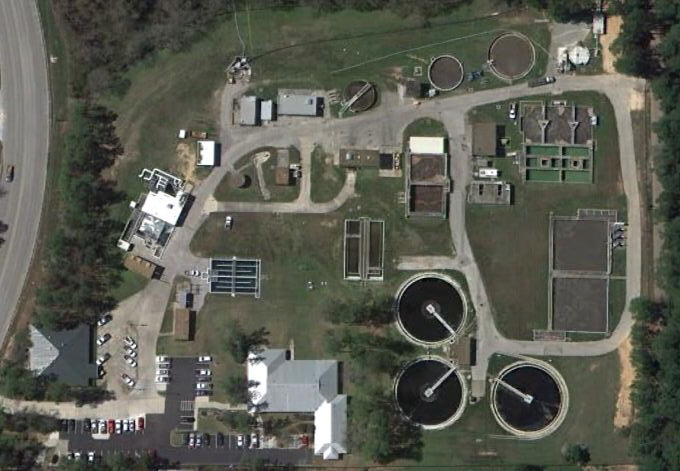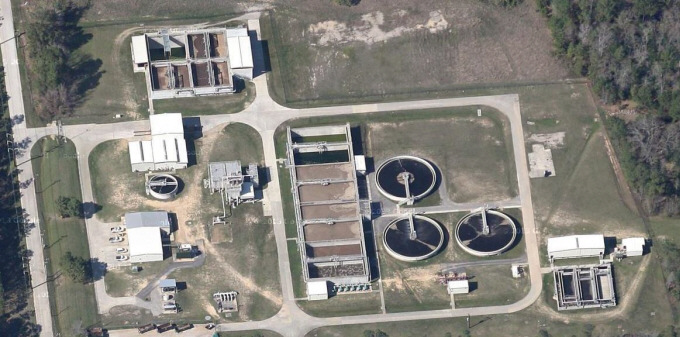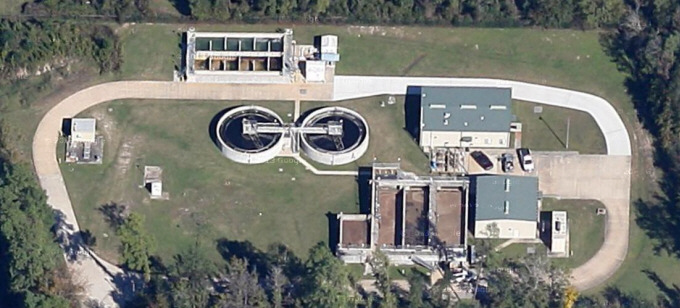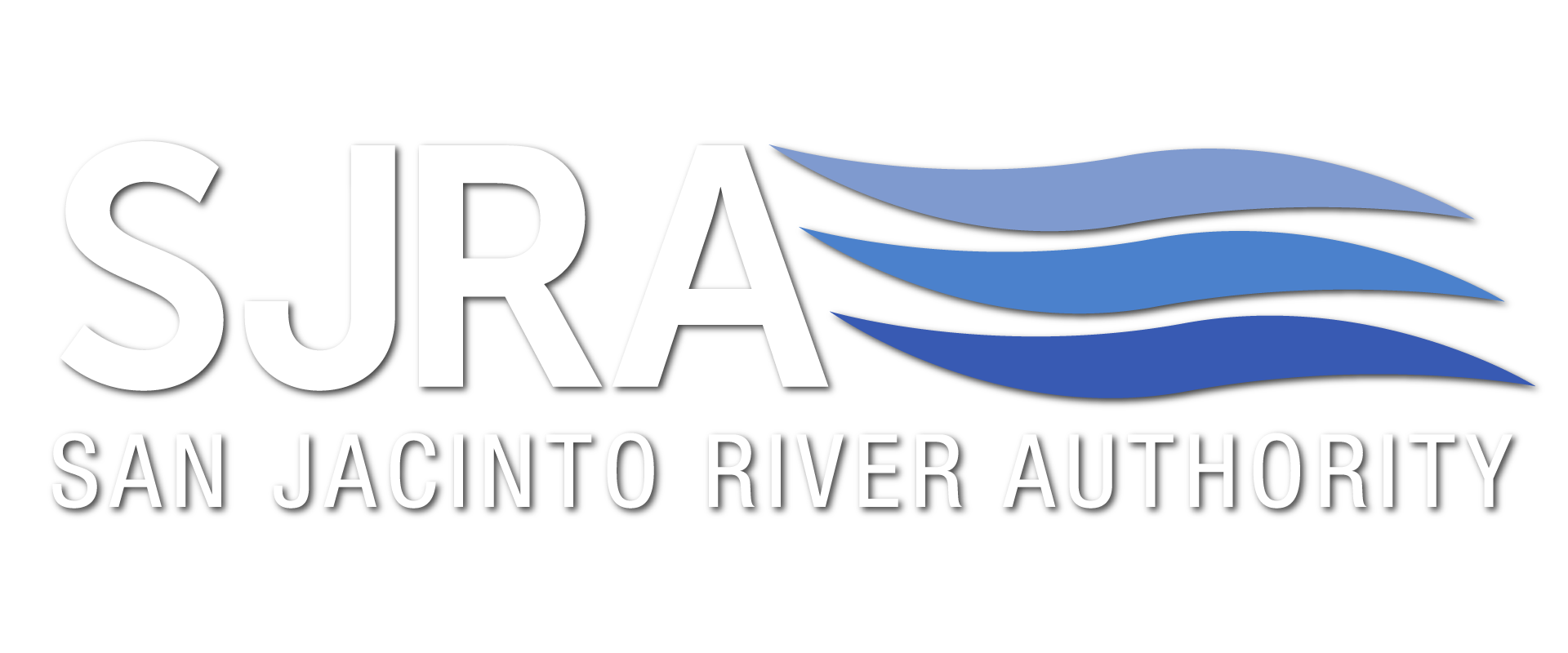SJRA’s Woodlands Division owns, operates, and maintains three Wastewater Treatment Plants (WWTPs), all of which are regional plants that serve the wastewater treatment needs of several Municipal Utility Districts (MUDs) in the immediate area.
SJRA’s excellent history of compliance with its Texas Pollution Discharge Elimination System (TPDES) permits for our various wastewater treatment plants has been rewarded by the National Association of Clean Water Agencies and the Water Environment of Texas. SJRA facilities have earned annual NACWA Peak Performance awards and Wastewater Treatment Plant of the Year awards.
Wastewater Treatment Plant No. 1

WWTP No. 1 is located north of Sawdust Road, has a design capacity of 7.8 million gallons per day (MGD), and is permitted for a 2-hour peak flow of 18.0 MGD. The WWTP receives raw sewage (influent) from residential dwellings and commercial businesses. The average daily flow is approximately 3.2 MGD.
Wastewater treatment at this facility consists of mechanical and manual bar screens, a grit removal unit, four aeration basins, three secondary clarifiers, two cloth media filters, and three chlorine contact basins. The sludge handling units include aerobic digesters, a gravity thickener, and a belt filter press.
Influent is treated through a mechanical bar screen before reaching the influent lift stations. Influent is then treated further through a degritter unit. Treated water is then gravity fed into aeration basin splitter boxes where the influent/raw is mixed with the return activated sludge (RAS). RAS is the process by which the active bugs are recycled to the new wastewater that does not have as many bugs. Two aeration basins are equipped with mechanical aerators; the other two basins utilize fine bubble diffused aeration systems, with the air provided by 200 hp blowers. The mixed liquor (or concentration of suspended solids) from the aeration basins is routed to a splitter box before being gravity fed into three secondary clarifiers. The clarified effluent is then gravity fed to two low-head sand filters. Filtered effluent is further treated using chlorine disinfection. Treated and disinfected effluent is then de-chlorinated with sulfur dioxide.
The treated effluent is discharged to Panther Branch or alternatively to Harrison Lake for reuse for golf course irrigation.
Wastewater Treatment Plant No. 2

WWTP No. 2 is located on Research Forest, has a design capacity of 6.0 MGD, and is permitted for a 2-hour peak flow of 15.6 MGD. The WWTP receives raw sewage (influent) from residential dwellings and commercial businesses. The average daily flow is approximately 3.5 MGD.
Wastewater treatment at this facility consists of mechanical and manual bar screens, a grit removal unit, eight aeration basins, three secondary clarifiers, two low-head sand filters, and one cloth media filter. Sludge handling units include aerobic digesters, a gravity thickener, gravity belt thickeners, and two belt filter presses.
Influent is treated through a mechanical bar screen after reaching the influent lift station. Treated water is then gravity fed into aeration basin splitter boxes where the influent/raw is mixed with the RAS. All aeration basins utilize fine bubble diffused aeration systems that are similar to the “bubblers” in a fish tank. The mixed liquor from the aeration basins is routed to a splitter box before being gravity fed into three secondary clarifiers. The clarified effluent is then gravity fed to two low-head sand filters and one cloth media filter. Filtered effluent is further treated using chlorine disinfection.
Treated and disinfected effluent is then de-chlorinated with sulfur dioxide and discharged to Panther Branch, which feeds into Lake Woodlands.
Wastewater Treatment Plant No. 3

WWTP No. 3 is located in Harpers Landing and has a permitted flow of 0.900 MGD. The WWTP receives influent from residential dwellings and a few commercial businesses. The average daily flow is 0.510 MGD.
Plant influent flows to the headworks, which has an automatic mechanical fine screen and aeration flow splitter. From the headworks, wastewater flows to the aeration basins, then to the secondary clarifiers. Clarifier effluent flows into the chlorine contact basins and then to the outfall, which discharges to an unnamed creek. Solids from the secondary clarifiers are either routed back to the headworks or pumped into aerobic digesters. Liquid sludge is disposed of via Land Application at a site that is not located at the facility.

